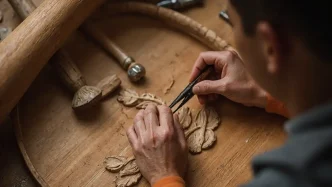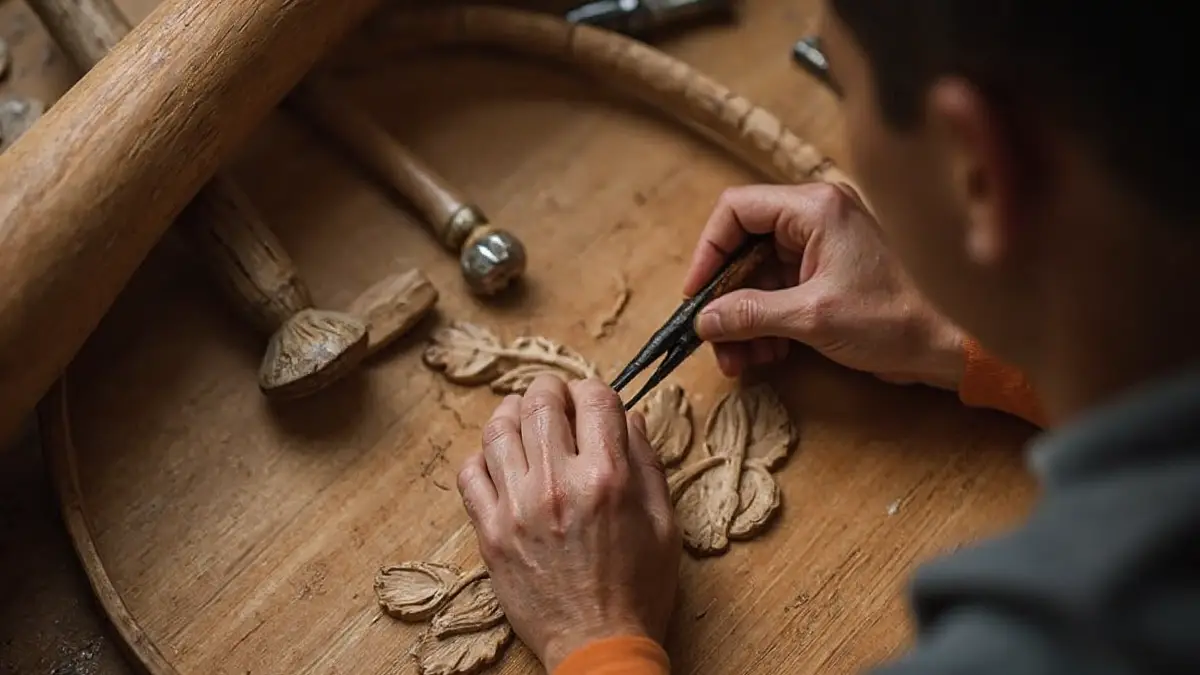In the heart of Hải Phòng City’s Cẩm Giàng District, the air of Đông Giao village hums with the steady rhythm of chisels and saws. Here, a centuries-old tradition of wood carving thrives, carried forward by artisans like Vũ Xuân Én, whose latest work—a monumental sculpture of Vietnamese historical figures carved from a giant tree root—stands as a testament to both skill and cultural reverence. This village, home to over 1,000 households with nearly all engaged in the craft, offers a glimpse into a living heritage that blends passion, perseverance, and innovation.
A Monument to History
At the entrance to Đông Giao village, visitors are often struck by the sight of Vũ Xuân Én, a master artisan, laboring over a massive tree root. Measuring six meters wide, 3.3 meters tall, and weighing around five tonnes, this raw material is being transformed into an ambitious piece titled 4,000 Years of Vietnamese History. Featuring hundreds of prominent figures from the nation’s past, the sculpture is a collaborative vision shared with Én’s older brother, driven by their mutual love for history. “I’m deeply passionate about this piece” Én shared, reflecting on the project expected to be completed by the end of next year. “We wanted it to be not only beautiful but meaningful.”
With 37 years of experience, Én embodies the dedication required to excel in this craft, a skill passed down through generations in his family. He emphasizes the dual need for passion and innate talent to achieve mastery. “To master this craft, you need both passion and natural talent” he explained. “That’s the only way to become a truly skilled artisan.” Among the challenges he faces, carving human figures stands out as the most demanding, requiring precision to ensure recognizable likenesses—an essential detail for a work that aims to honor historical icons.
A Craft Rooted in Passion
Én is far from alone in his commitment to wood carving. Across Đông Giao, artisans of all ages share a profound loyalty to their trade. Vũ Văn Tảo, a 27-year-old carver with 12 years of experience, highlights the perseverance required. “This work demands perseverance, a love of learning, and genuine passion” he said. “If you’re only in it for the money, it won’t work.” Tảo represents a younger generation bringing fresh perspectives, often drawing inspiration from social media to learn techniques from other cultures, such as those from China, which they adapt to enhance their own creations. “We continuously refine the details—facial expressions, carving lines—and over time, our work becomes more beautiful and unique” he added.
Nguyễn Thị Hoa, one of the few women in this physically demanding trade, echoes the sentiment of passion as a driving force. Having carved for nearly 20 years, she admits the work can be exhausting but remains unshakable in her dedication. “I’m so passionate about it, I just can’t walk away” she said. Hoa also notes a growing interest among younger villagers, which motivates her to keep learning from more experienced artisans to improve the quality and value of her products.
For 60-year-old Vũ Văn Năng, the craft is a lifelong pursuit inspired by the teachings of President Hồ Chí Minh. “President Hồ once said, ‘Study, study more, study forever’” Năng recalled. “As craftsmen, we must do the same—keep learning endlessly, only stopping when our minds can no longer go on.” His words reflect a shared ethos in Đông Giao, where dedication to improvement and preservation of the craft is a collective mission.
A Legacy of Skill and Innovation
The wood carving tradition in Đông Giao stretches back over 300 years, historically renowned for producing worship items like altar tables and temple gates, prized across neighboring provinces. The artisans’ skills have also contributed to significant architectural projects, including the ancient Imperial City of Huế. Village legend tells of craftsmen, led by Vũ Xuân Ngôn during the reign of King Lê Cảnh Hưng (1740–1786), traveling to Huế to aid in construction for the feudal dynasty. Today, a community of Đông Giao descendants in Huế, known as Đông Tiến, continues to uphold this legacy.
Over the centuries, Đông Giao artisans have adapted to changing times, incorporating scientific and technical advances to diversify their products for both domestic and international markets, including China. Large tree trunks imported from South Africa often serve as the raw material for their grand statues, showcasing their ability to blend tradition with global resources. Village head Vũ Đức Thịnh notes the local authorities’ role in sustaining this heritage, facilitating access to loan programs through policy banks to support woodworking businesses. Additionally, training programs for apprentices from other regions help ensure the craft’s future, passing on skills to new generations.
Preserving a Cultural Treasure
Đông Giao village stands as a rare bastion of traditional craftsmanship in a rapidly modernizing world. With 95 percent of its households still practicing wood carving, the community’s commitment to nurturing this art form is evident. The artisans here are not merely workers but custodians of a cultural treasure, their hands shaping both wood and history. As they chisel away, creating everything from intricate statues of Maitreya Buddha to sweeping historical narratives in tree roots, they carry forward a story of resilience and creativity.
For visitors to Đông Giao, the village offers more than just a visual spectacle; it is a living museum of Vietnam’s artistic soul. As artisans like Vũ Xuân Én continue to craft their monumental works, one can’t help but wonder how future generations will build upon this foundation, ensuring that the rhythmic sounds of carving remain a vital part of the village’s heartbeat.
















